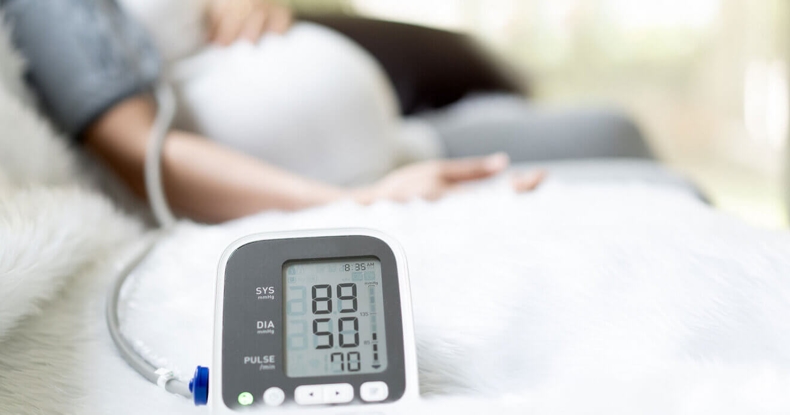What are Perimenopause and Menopause?
- Category: Women's Health
- Posted On:
- Written By: LVMC Staff

In today’s society, many women find themselves unprepared for the transitions that lead up to menopause. You may have heard about menopause, or seen mention of a woman having a hot flash, but menopause is about a lot more than hot flashes and night sweats. The period that comes before menopause, known as perimenopause, can begin many years before official menopause and it can have an array of symptoms as well. For many women, experiencing symptoms of perimenopause can catch them by surprise. They may not be aware of the large range of symptoms they may experience. They also may not be aware of what they can do to manage symptoms, or how long symptoms will last.
Many women may also have conflicted feelings about experiencing a life transition like menopause. Some may feel relieved to be moving past the phase of life of menstruation and its accompanying hassles, while some may feel saddened to mark the end of their fertile years. Wherever you may fall along this continuum, Lompoc Valley Medical Center is here to help. Our knowledgeable medical providers can support you along the way, including discussions about what to expect with your personal health situation and how to manage any symptoms, as they arise. Read on for what you need to know about perimenopause and menopause.
Defining perimenopause and menopause
According to the American College of Gynecologists (ACOG), perimenopause is a time during which your hormone levels begin to change. This is driven by a change in the size of your ovaries, which get smaller and produce less estrogen, then gradually stop working. These changes also impact your menstrual cycle. You might not recognize perimenopause at first because symptoms may be very subtle. However, perimenopause may begin as early as ten years before you enter official menopause, which is defined as not having had a menstrual period for 12 months.
When do perimenopause and menopause typically happen?
There is a wide age range for when these life transitions take place, with some experts citing a range of age 40 to 58. Perimenopause usually begins in your 40s (though changes in your estrogen production can start in your 30s) and it can last anywhere from 2 to 10 years. In the U.S., the average age of menopause, or the age at which a woman has not had a menstrual period for 12 months, is 51 years old. If you have had a certain medical procedure, such as removal of your ovaries, or treatment with chemotherapy or radiation, you may have a medically-induced onset of menopause outside of this range.
Just as the age of your first menstrual period is largely dictated by genetics, so is your start of menopause. However, certain lifestyle habits such as smoking may cause you to experience menopause earlier.
What happens during perimenopause?
During perimenopause, your ovaries start to release eggs less frequently. This means you become less fertile because fewer eggs are available to be fertilized by a sperm cell and travel to the uterus for implantation. The change in your ovaries will affect your menstrual cycle. You may find that in perimenopause there is a departure from your typical menstrual cycle, with your periods being heavier or lighter, or lasting longer or shorter than before. Eventually, you may find that you are having longer spaces of time between periods until you finally do stop having a period. When you have no longer had a period for 12 months, that’s menopause.
What sort of symptoms occur during perimenopause?
Just as your experience of menstruation is extremely personal and unique to you, you can expect that perimenopause will be similar. However, some common symptoms are more likely to occur during perimenopause for all women.
In addition to changes in your menstrual cycle, other symptoms of perimenopause may include:
- Changes in your mood, such as increased depression or anxiety
- Changes in your sexual desire
- Changes in the appearance or feeling of your vaginal area (with increased atrophy or dryness)
- Difficulties concentrating
- Headaches
- Sweating at night
- Hot flashes or heavy sweating
- Difficulties sleeping
- Aching muscles or joints
- Frequent urination
You may also experience symptoms similar to those during premenstrual syndrome (PMS), such as mood changes, irritability, or bloating. As menopause approaches, you are most likely to experience hot flashes, as experts note these are the most common menopausal symptom. Experts note that 50 to 82% of women who experience menopause report hot flashes and night sweats as symptoms.
How can a healthcare provider tell if a person is going through perimenopause or menopause?
Because menopause is defined as not having a menstrual period for 12 months, it is usually diagnosed in hindsight. It can be hard to tell when your body will arrive at menopause. It can also be difficult to pinpoint the exact start of perimenopause, which is why the condition is so elusive and many women are caught off guard by symptoms. Usually, perimenopause is considered a “diagnosis of exclusion,” which means that a healthcare provider may use certain tests (such as ultrasounds or blood tests) to make sure that symptoms are not coming from another condition before being able to attribute them to perimenopause.
What other conditions can mimic perimenopause?
Several other medical conditions can cause symptoms similar to perimenopause. You may also have two conditions at one time, or overlapping symptoms, which can make the diagnosis less certain. However, if you’re having a change in your menstrual cycle in your 40s, especially if it comes on suddenly or with severe symptoms, your medical provider may first make sure that this is not due to another cause, such as uterine fibroids, a cervical infection, or even cervical cancer. If you’re experiencing vasomotor symptoms such as frequent sweating or temperature changes, your medical provider may check levels of other hormones, such as your thyroid hormone, to make sure that you don’t have an excess or a deficiency. Additionally, if you’re having changes in your mood, like feeling more anxious or depressed, your medical provider can ask further questions to evaluate a potential trigger or cause of your condition.
Is there a treatment for perimenopause symptoms?
While perimenopause itself is a natural transition that does not require treatment, many women can benefit from assistance with the symptoms of perimenopause if they are too uncomfortable.
Specific treatments for symptoms include:
- Medications like antidepressants to help stabilize mood and improve hot flashes
- Lifestyle changes such as a diet high in fruits, vegetables, whole grains, and calcium
- Regular exercise
- Trigger avoidance
- Vaginal lubricants to help with dryness
- Low-dose vaginal estrogen products
- Supplements such as soy, black Cohosh, and Chinese herbal remedies (though these are not FDA-approved)
You may have also heard of hormone therapies for perimenopause and menopause symptoms. For women who have a uterus, medical providers can use a combination of estrogen and progestin hormones. For women without a uterus (those who have had a hysterectomy), medical providers can use estrogen alone. These medicines may be given in pill form, or as patches, gels, or sprays.
What are the risks and benefits of using hormone therapy for perimenopause and menopause symptoms?
A significant benefit of hormone therapy in perimenopause and menopause is simply that it is effective. Taking a pill form of estrogen or combined estrogen can help relieve hot flashes and night sweats, as well as vaginal dryness. It can also help keep your bones more dense and lower your risk of colon cancer. However, combined hormone therapy also carries risks. These include a small increased risk of a heart attack, stroke, deep vein thrombosis (DVT), breast cancer, and gallbladder disease. This is why it’s essential to have a thorough exam and conversation with your healthcare provider before starting any medications for the treatment of perimenopause or menopause symptoms.
What health-related changes occur after menopause?
When you have transitioned to menopause, you may begin to lose bone density at a more rapid pace than previously. This is because of your decreased estrogen hormones. These changes in bone density make you more vulnerable to developing osteoporosis, a disease of bone thinness that increases your risk of bone fractures. The decrease in your body’s estrogen can also make you more vulnerable to cardiovascular problems like heart attacks and strokes. Make sure to check in with your healthcare provider to learn about what you can do to protect yourself from these changes after menopause.
How to learn more about perimenopause and menopause
When you are experiencing symptoms like irregular menstrual periods, mood changes, or excessive sweating, it can harm your overall well-being. However, there are many things that you can do to help relieve perimenopausal or menopausal symptoms. At Lompoc Valley Medical Center, our family medicine, internal medicine, and OBGYN providers are skilled at helping patients manage physical and psychological changes, especially when it comes to women’s health.
To make an appointment to discuss symptoms of perimenopause or menopause, contact us today.






.jpg)